Platelets having several important functions in the body, chiefly helping to form strong blood clots. One of the more common problems for which patients are referred to me is that of low platelets. This is a condition called thrombocytopenia, and can be life-threatening. Without adequate functional platelets, patients can spontaneously bleed.
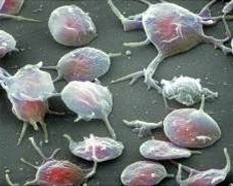
In this week’s blog post, I review why platelets become low, what causes this abnormality, and how thrombocytopenia is treated.
What causes low platelets?
There are three general causes of low platelets in dogs and cats. Think of them as three boxes, and inside each box are several potential individual diseases. What are those boxes? They are:
- Bleeding
- Dysfunctional bone marrow
- Destruction by the immune system
Bleeding: When a dog or cat (or you) bleeds, the body immediately tries to stop the hemorrhage. One of the first cells called into action is the platelet. A damaged blood vessel shrinks in diameter to reduce the volume of blood lost, and circulating platelets stick to a special protein (called von Willebrand’s factor) that has been exposed by damage to a blood vessel. Other proteins (i.e.: thrombin, fibrin, collagen) then allow platelets to connect to form a mesh that plugs the hole in the vessel. If hemorrhage is prolonged or severe, the total population of platelets in the body decreases because they are “consumed” by the bleeding process. In most bleeding patients, platelets don’t decrease below a level where spontaneous hemorrhage from other sites in the body occurs.
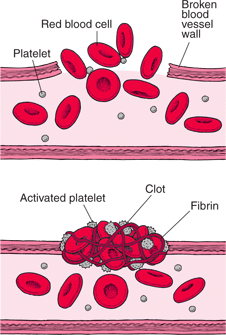
Dysfunctional bone marrow: Platelets are made in the bone marrow, the body factory that is also responsible for producing red blood cells and white blood cells. Various diseases and drugs can affect cell manufacturing in this cell factory, potentially resulting in very low platelets. Indeed platelets can be extremely decreased, and affected patients may bleed spontaneously.
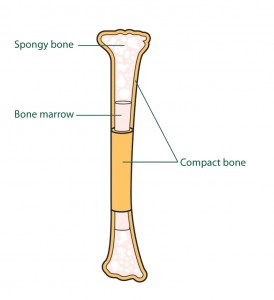
Destruction by the immune system: Immune-mediated thrombocytopenia (ITP) is the term used to describe the destruction of platelets by the body’s immune system. Certain infections, vaccinations, medications and/or cancers may trigger this disease. When an underlying cause can be identified, the disease is called secondary ITP. Unfortunately an underlying cause is frequently never identified in the majority of dogs and cats – this is called primary or idiopathic ITP.
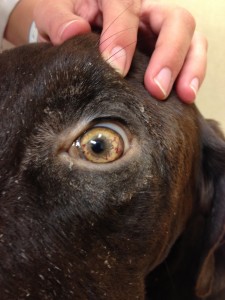
Certain dog breeds are predisposed to developing primary ITP, including American cocker spaniels, Old English sheepdogs, Scottish terriers, Hungarian Vizslas and dachshunds. To date, there is no breed predisposition documented in cats. Patients with ITP often have markedly decreased platelet numbers, and this can result in spontaneous bleeding from nose, as well as into the skin, gastrointestinal tract, brain, and urine.
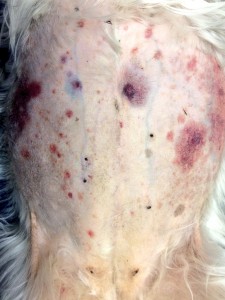
How are platelets measured?
Platelets are routinely measured with a simple non-invasive blood test called a complete blood count or CBC. Samples can be submitted to any number of veterinary reference laboratories; these are gold-standard facilities with board-certified veterinary clinical pathologists and well-trained medical technologists who work with blood samples all day. Nevertheless some CBCs are performed in veterinary hospitals, a practice referred to as in-house testing. The most commonly cited reasons for using in-house analyzers are ease of use and rapid turn-around of results.
When an in-house blood analyzer is used, a veterinarian should always evaluate blood cells under a microscope too; this is an absolutely essential part of a CBC!

Despite this fact, blood film evaluations are often not performed in first opinion veterinary practices either because of lack of confidence performing them and/or lack of time to complete them. Veterinary reference laboratories are not allowed to omit this step! If veterinary reference laboratories can’t omit peripheral blood film evaluations, then veterinarians performing CBCs in their in-house laboratories shouldn’t omit them either!
So which is better: a veterinary reference laboratory or an in-house laboratory? I always perform non-STAT blood tests, including CBCs, at a veterinary reference laboratory. Why? I trust them! After all, the American Association of Veterinary Laboratory Diagnosticians (AAVLD) accredits these testing facilities. I want board-certified veterinary clinical pathologists overseeing my patient’s samples. Almost all in-hospital laboratories would be summarily shut down if they were regulated by the same standards required by the AAVLD.
How are low platelets treated?
Understandably the most appropriate treatment for low platelets depends on the underlying cause – that is, bleeding, dysfunctional bone marrow or destruction by the immune system. Certainly if a patient is hemorrhaging (i.e.: from a bleeding tumor in the body), immediate steps must be taken to stop the blood loss.
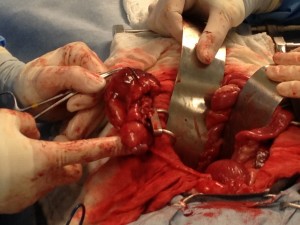
Many of the surgeries needed to control bleeding that is pronounced enough to subsequently cause low platelets can be quite intricate; furthermore the post-operative care can be relatively intensive for many patients. For these reasons, a primary care veterinarian may recommend immediate consultation with either a board-certified veterinary surgeon or emergency/critical care specialist to treat an affected patient as aggressively as appropriate.
Patients with dysfunctional bone marrow and/or who are living with immune-mediated platelet destruction (ITP) require a thorough diagnostic investigation, including evaluation of bone marrow itself.
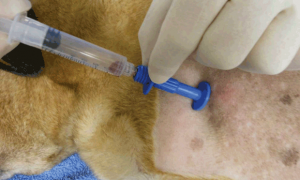
Consultation with a board-certified veterinary internal medicine specialist is strongly warranted for these patients to ensure both a thorough diagnostic investigation is carried out and a fittingly aggressive therapeutic plan is prescribed.
The take-away message about low platelets…
Platelets are uniquely important cells produced in bone marrow that are principally involved in the formation of blood clots. When a patient bleeds, platelets are called to the site of hemorrhage in an attempt to stop blood loss, and this can lower the platelet population in the body. Platelets also decrease when the bone marrow isn’t working properly and when the immune system is triggered to destroy them. A thorough diagnostic investigation is essential to identify the cause of low platelets and initiate effective treatment as soon as possible. Having a pet evaluated by a board-certified veterinary internal medicine specialist once low platelets are documented by a primary care doctor can be invaluable for maximizing the chance of meaningfully positive outcome.
To find a board-certified veterinary internal medicine specialist, please visit the American College of Veterinary Internal Medicine.
To find a board-certified veterinary emergency and critical care specialist, please visit the American College of Veterinary Emergency and Critical Care.
Wishing you wet-nosed kisses,
cgb


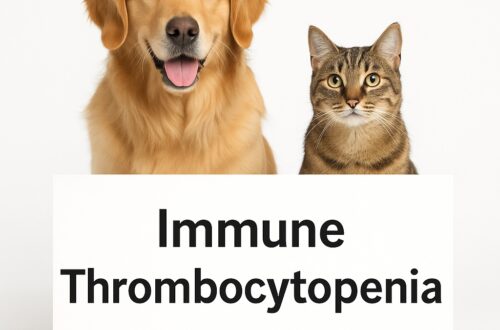


You could certainly see your skills within the work you write. The world hopes for more passionate writers like you who arent afraid to say how they believe. Always follow your heart. edfekkdeefcc
Thank you very much for your kind words. I hope you will consider sharing the information on this blog with other pet parents so all can know that pets can have specialists too!